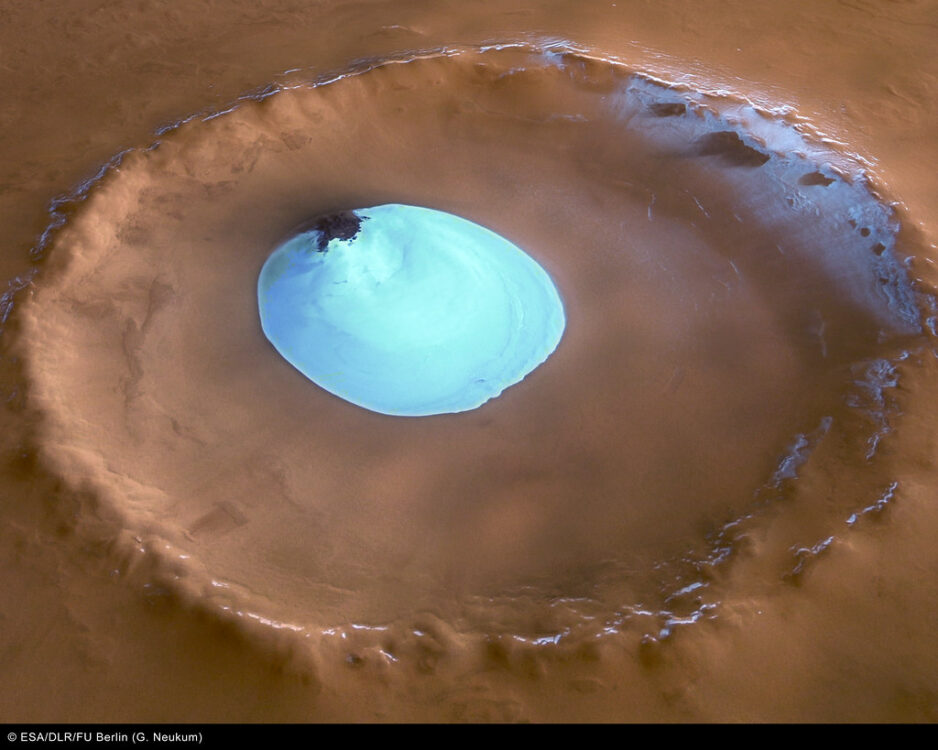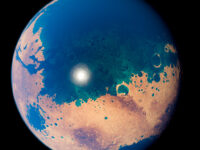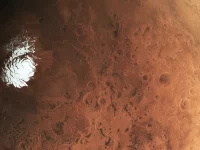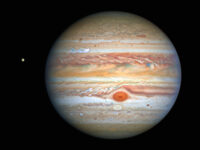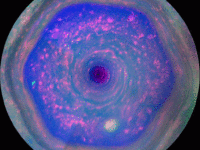Water is undeniably the source of life. Consequently, it is one main factor that scientists look for when combing the universe for habitable locations. As it turns out, they may not have to look far. Our neighboring planet, Mars, has been confirmed to have liquid water lakes deep beneath its southern polar ice cap.
Evidence for water on Mars was already being collected back in 2018 after the theory was proposed by Steve Clifford. He was inspired by the studies of saltwater bodies that exist underneath the large ice sheets in Antarctica and Greenland but applied it to Mars’ south pole. Mars Express, a spacecraft for the European Space Agency, used an instrument called the Mars Advanced Radar for Subsurface and Ionosphere Sounding (MARSIS) to collect radar data. This allows scientists to study the interior structure of the planet, where the radar signals bounce back differently depending on the material they hit. Surprisingly, the signals MARSIS received from the south pole were a large enough magnitude that they could only be explained by a large underground body of liquid water. The lake was approximated to be about 12.5 miles long and a mile underneath the surface. Despite this astounding discovery, the results were not entirely conclusive, and scientists questioned if there was another cause for the bright reflection at the ice cap.
However, more data were gathered in 2020, and three more lakes were identified close to the first. In this study, MARSIS once again scanned the surrounding area of the previously located lake, and the resulting data were analyzed in a similar manner to the water beneath the glaciers in Antarctica. Scientists confirmed the liquid nature of the lake as well as its dimensions to be 12 by 18 miles, but its depth remains unknown. The new pools of water appear to be offshoots of the main lake, which were likely created by a past warmer climate.
Surprisingly, the signals MARSIS received from the south pole were a large enough magnitude that they could only be explained by a large underground body of liquid water.
Since the lakes consist of liquid water, the water must be extremely salty in order to have a low enough freezing point to not solidify in the Martian climate. Based on the theory that Mars used to imitate the current environment of Earth, the saltwater is likely remnants of a larger body of water that used to flow on the surface millions or even billions of years ago before it was pushed underground. It would have served as an ideal habitat in the past, but with our technology right now, there is no way of knowing for sure the probability of fostering life back then. When we finally have the resources, scientists hope to retrieve samples from the surface above the underground lakes to study further. For now, they’re aiming to keep looking for similar systems of water at the south pole and eventually expand to include the north pole as well.
However, scientists are also expanding their search outside of the polar ice caps. It was recently uncovered in 2021 that Mars’ intense canyon network, Valles Marineris, has been hiding a large water reservoir in its depths. With the help of the Trace Gas Orbiter and its neutron telescope on board, around 40 percent of the region within the valleys was found to contain hydrogen that is assumed to be from water molecules. This type of water is anticipated to exist in the form of ice, but due to the temperature, it should have evaporated unless special conditions are preventing it from doing so. The scientists working on this project established that, while this is a huge step forward, more analysis is needed to fully understand the properties and form of the water.
The water being unearthed on Mars continues to provide scientists with the motivation to keep pushing forward in their research as it is crucial to understanding and answering the questions of Mars’ past and its potential for being habitable. Most importantly, we will be closer to answering the long-standing question of life existing elsewhere in the universe.
Nature Astronomy (2021). DOI: 10.1038/s41550-020-1200-6
